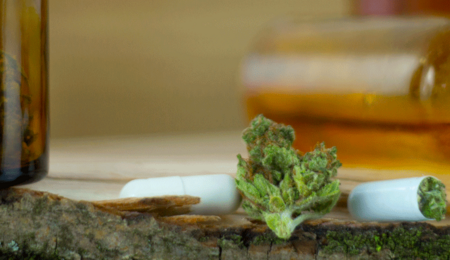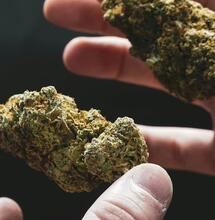Scientist: Pushing OxyContin Addicts to Heroin Reveals & 'Utter Failure' of Drug War

Scientist: Pushing OxyContin addicts to heroin reveals ‘utter failure' of drug war
Scientist: Pushing OxyContin addicts to heroin reveals ‘utter failure' of drug war
The author of a landmark study on how the recent decline in abuse of the opium-based painkiller drug OxyContin has driven up heroin addiction rates slammed the "utter failure" of the American drug war's myopic focus on "supply-side" strategies speaking to Raw Story this week, explaining that the strategy ultimately pushes addicts to embrace ever more dangerous drugs and increasingly destructive behaviors. "What we need to focus on in government policy is not on the supply-side, which all of our policy has been toward heroin, cocaine and prescription opiods, trying to discourage their penetration into this country," Dr. Theodore J. Cicero, Vice Chairman for Research at Washington University's Department of Psychiatry, explained in an exclusive interview. "The reasoning is, if we cut down on the supply then the demand will eventually dry up. But our policy in that regard has been an utter failure." "Our conclusion, fundamentally, is that this is sort of like the balloon analogy: if you depress one location on the balloon, the volume doesn't change and it just pops up someplace else," he added. "Drug abuse is much like this balloon effect. You can decrease one drug, but they're not going to stop using. The addicts who are interested in this to get high, they're going to switch to something else." Cicero's research, published as correspondence this week in The New England Journal of Medicine, showed that since an abuse-resistant formula was introduced to OxyContin, abuse rates have dropped dramatically - but the rate of heroin use across the country nearly doubled as a result, exposing a vastly larger population to all the harms that come with it, like an increased risk of overdose or contracting HIV/AIDS. Cicero told Raw Story his research was published as a letter "to be sure it was considered in the national debate, particularly by regulatory people as public policy evolves." Perhaps not coincidentally, Purdue Pharma L.P. is currently seeking an extension on its instant release OxyContin patent, and arguing that an extension is the only way to prevent generic versions of instant release OxyContin from being reintroduced to the market after vanishing in 2010. That extension will be extremely valuable, too: according to The New York Times, Purdue has sold more than $15 billion-worth in OxyContin over the last 10 years. That may also explain why Purdue has chosen just recently to begin trials of OxyContin in children, first mandated by the FDA in 2004: because the ongoing trials automatically grant the drug-maker a 6-month patent extension. "For 15 years, [OxyContin] was certainly the number one prescription drug of abuse in this country," Cicero said. "A lot of people believe that was the drug that initiated this whole epidemic of prescription drug abuse, which is of course what prompted the development of the abuse-deterrent formulation, trying to get people to stop snorting or injecting it. It seems to have been rather successful in that respect, but unanticipated outcomes are always surprising." Purdue has also suggested the abuse-resistant formula for OxyContin, approved by the FDA in 2010, should be considered for other opoid drugs commonly abused by addicts because it makes extended-release pills much harder to crush, snort or inject. Several other drug-makers are experimenting with their own abuse-resistant formulas as well. It's that very possibility which has critics immensely concerned. While the shift from OxyContin to other opium-based drugs may be surprising to some, it is not to professionals in the fields of medicine and law enforcement, although there's never been a proper study like Cicero's to clearly illustrate that. Speaking to Raw Story days before Cicero's research was published, John J. Burke, president of the National Association of Drug Diversion Investigators and a former Cincinnati police officer in charge of pharmaceutical investigations, claimed that Purdue's reformulation "has been very successful." He also noted that virtually all of the "anecdotal evidence" on substance abuse points to the formulation moving addicts to different drugs, "whether it's Oxycodone IR, heroin, [or] maybe it's Opana." Now that Cicero's study has confirmed that anecdotal knowledge, it's likely that the FDA will have to take into consideration the possibility that making all opoid drugs abuse-resistant could push many people addicted to pure, measured, clinical substances into a dirty, dangerous black market. "[Oxycontin] is a relatively safe drug in that you know what you're getting and you know your dose level," Cicero said. "But buying heroin - no heroin is pure on the street. It's cut by dealers to extend it as far as possible. There are reports of heroin purity being down to the 5-10 percent range, so it's really filled with a lot of adulterants. You can never be sure what dose of heroin you're actually getting. The risk you take when you shift from something with a known dosage form to something where you don't know what you're getting, the risk of overdose is extremely high." And it's not just a risk of overdose that's concerning to medical professionals: the potential for the emergence of new, more dangerous drugs is also an ever-present threat. One such drug is desomorphine, a.k.a. "crocodile," seen increasingly across Russia and used as a low-cost alternative to heroin. Cooked out of common codeine-based pills and household products like gasoline, paint thinner and red phosphorus, heroin addicts who switch to crocodile often see their flesh literally rot off their bones. Photos of their affliction are not for the faint of heart. "Heroin has been replaced with this horrible, awful narcotic substance that's vastly worse for the person than heroin," Dr. Robert Newman, President of The Baron Edmond de Rothschild Chemical Dependency Institute at the Beth Israel Medical Center in New York, told Raw Story. "It is absolutely horrendous." "We spend billions and billions trying to interdict the importation [of drugs] into the country, trying to interdict the wholesale and retail of drugs, but when's the last time someone saw a major public service announcement saying, ‘If you have opiate dependence, there's treatment available, call this number'?" he asked. Newman believes the nation's strategy should be a war on drug addiction, fought by medical science instead of police truncheons. "My God, if I can replace a drug that's going to kill my kids with a drug that's going to make my kids lead healthy, productive, functional lives, I'll do that every time," he said. "To ignore [opoid addiction] is suicidal from society's standpoint." For the FDA and drug-makers, abuse-resistant formulas may seem like an effective means of reducing prescription drug abuse, but Cicero warned that the consequences of that shift should also be factored into their thinking. "We could eventually curtail prescription drug abuse if all manufacturers did this," he concluded. "Or we might shift people into much more undesirable drugs. I'm not sure if that's to the benefit of the country, to have another resurgence of heroin abuse." SOURCE: www.rawstory.com AUTHOR: Stephen C. Webster
S
Soft Secrets



